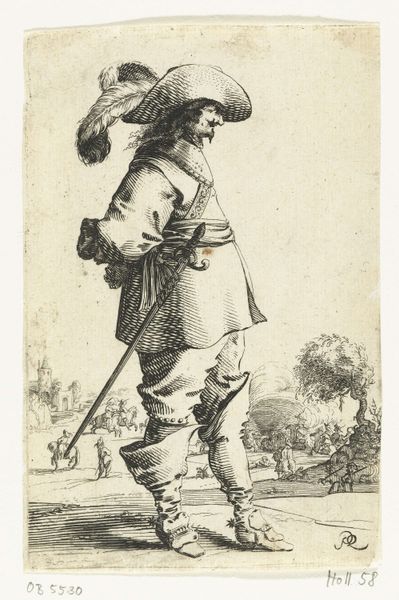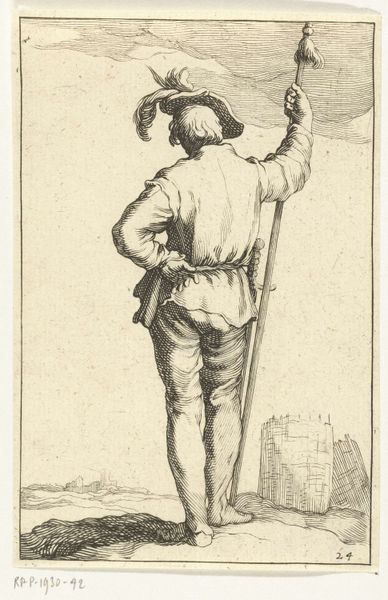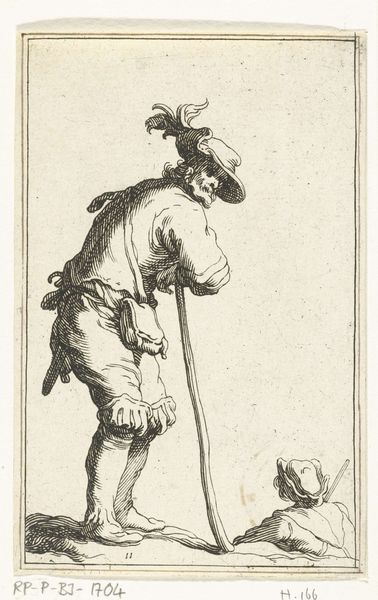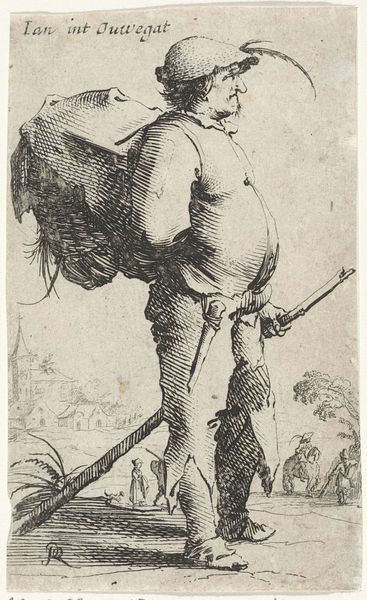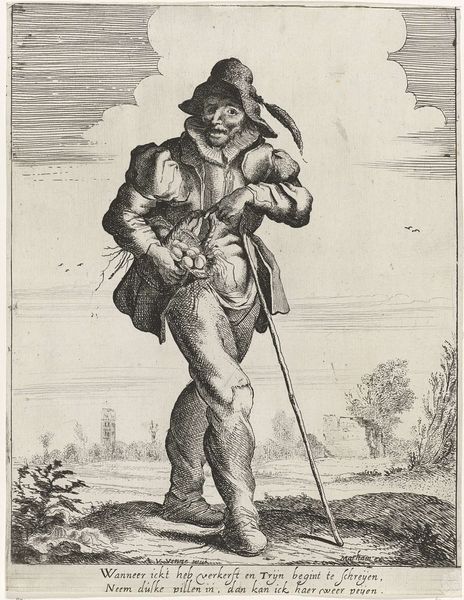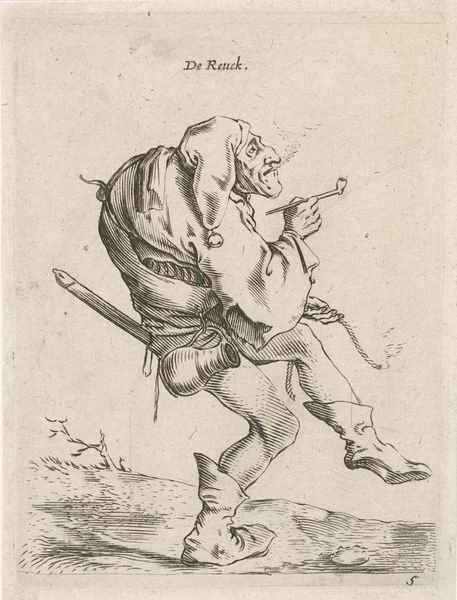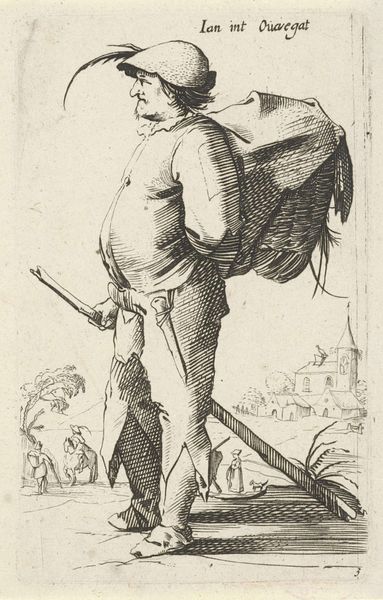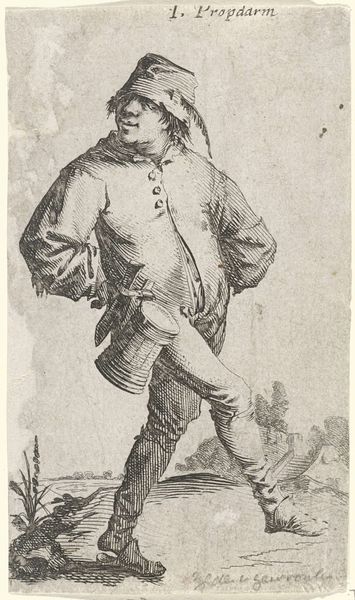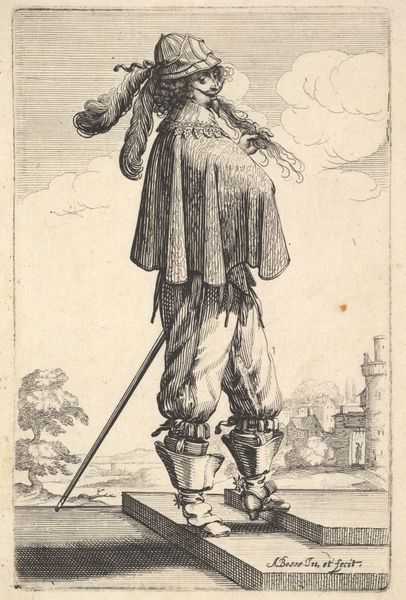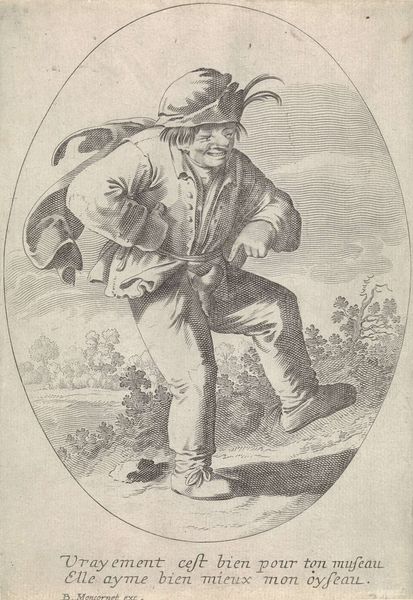
print, etching
#
portrait
#
baroque
# print
#
etching
#
landscape
#
portrait drawing
Dimensions: height 189 mm, width 134 mm
Copyright: Rijks Museum: Open Domain
Curator: Welcome. Before us we have "Man op de rug gezien," or "Man Seen From the Back," an etching made sometime between 1623 and 1653 by Pieter Nolpe, housed here at the Rijksmuseum. Editor: It's instantly striking – there’s an aloofness to this man, facing away. He exudes a certain confidence with that feathered hat and a very stylish swagger. Curator: I think understanding the print's potential role is important here. During this period, such images, often circulated as prints, were used to project certain status, or promote particular lifestyles. How does Nolpe tap into that? Editor: Definitely. He is deliberately positioned. This feels staged, or maybe it is, if these images had a promotional element, as you suggest. His clothes denote a class – expensive and fashionable, but there’s a vulnerability as well, a slightly foppish, fragile silhouette almost obscured by the landscape. Curator: Interesting use of “fragile.” I consider how Baroque art operated within highly structured patronage systems. Consider the rise of the bourgeoisie during the Dutch Golden Age – individuals aspiring to status could use imagery like this to reflect their ambitions. What could an artwork like this signal to those viewing it in the public realm? Editor: That's crucial. Maybe it isn't about the individual, then, but the type, a burgher attempting the gestures of nobility. The scale of the landscape behind him versus the figure itself tells a story – nature dwarfs this man. Power is complicated. Are we admiring him, or observing his struggles within a changing world? There are people milling about behind him in that field. Curator: I wonder too about the colonial implications present. This portrait aesthetic, if reproduced and consumed on a mass scale, presents power dynamics in a more universal and standardized approach, helping to promote social stratifications of wealth across cultural boundaries. Editor: It is complex, because the pose, viewed from the back, obscures so much, creating a barrier for direct assessment. It compels us to examine his presence, the cultural expectations, and what the Dutch sought to reflect back at themselves, both good and bad. Curator: Absolutely, this piece offers a layered commentary. A study of wealth, class, and potentially colonialism, wrapped within the intimate portrayal of an individual in relation to the society around him.
Comments
No comments
Be the first to comment and join the conversation on the ultimate creative platform.
